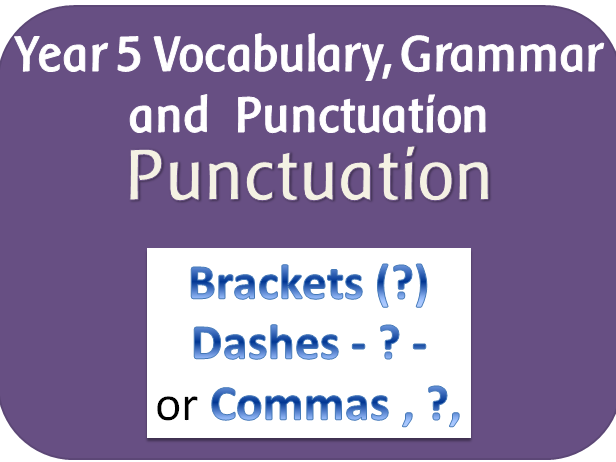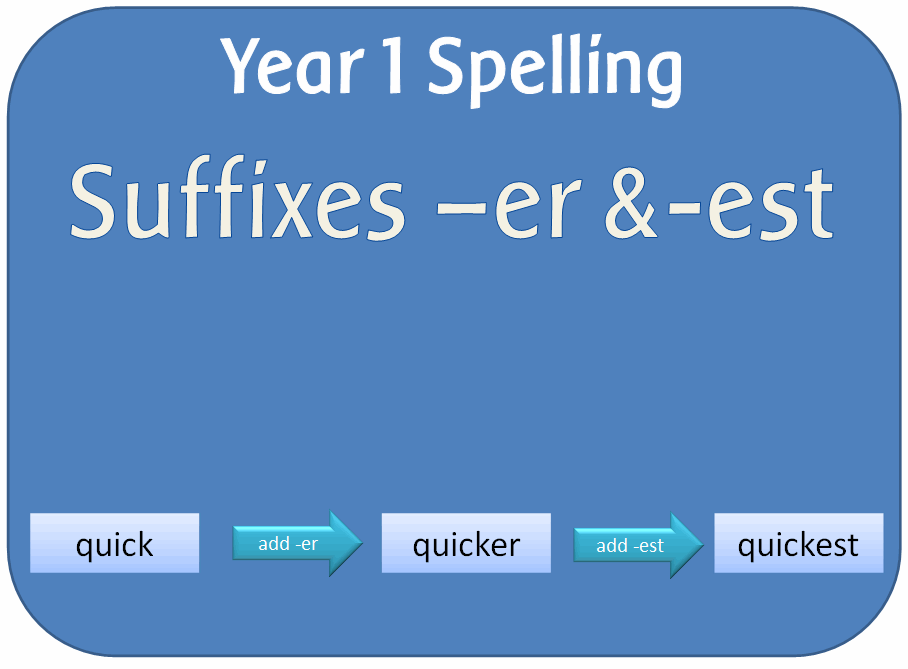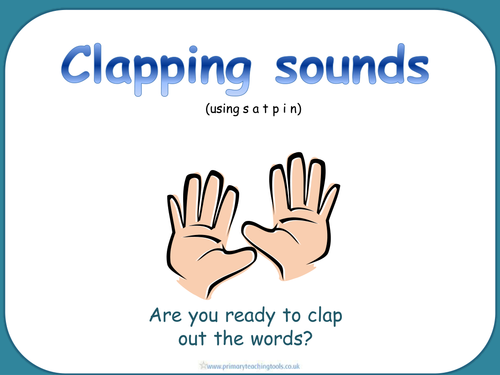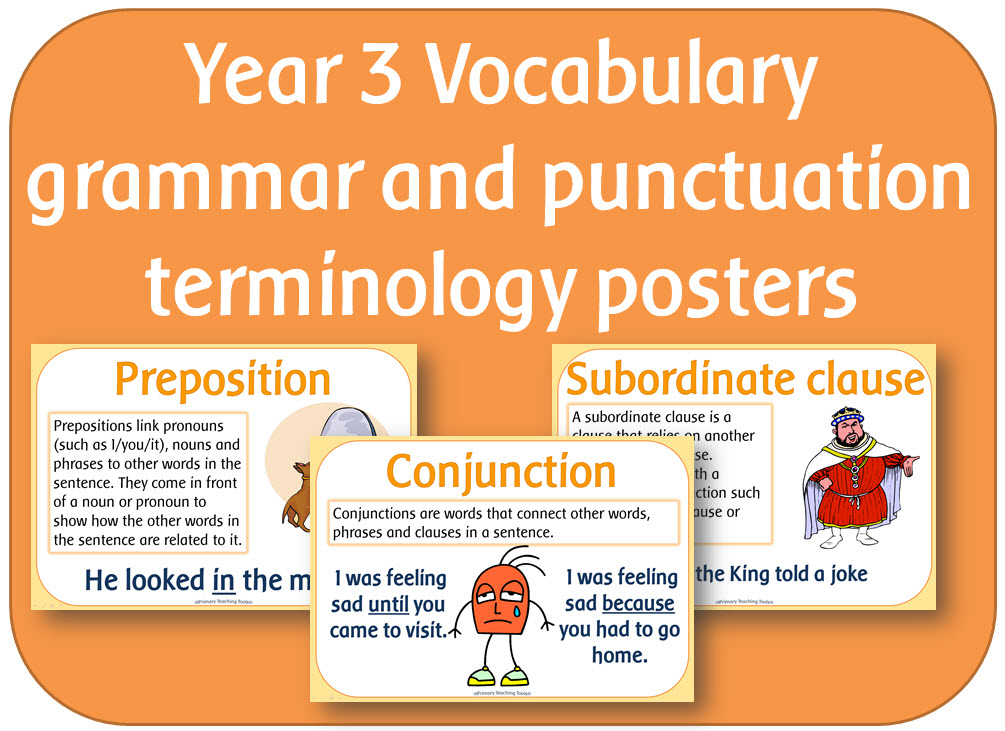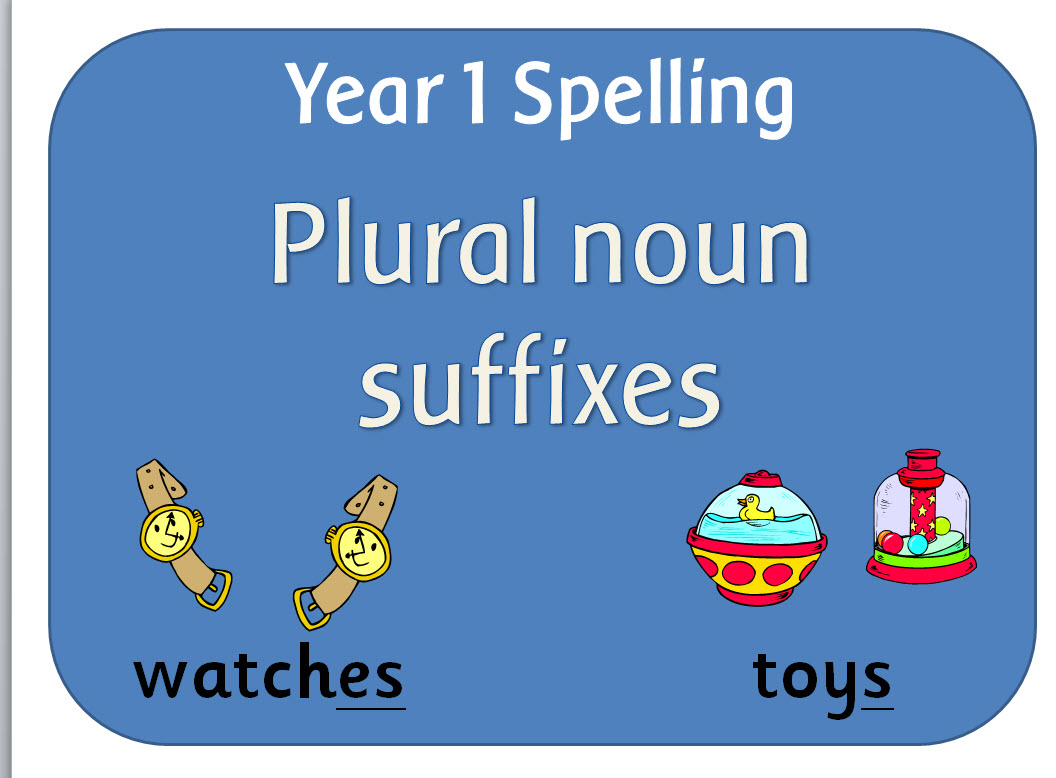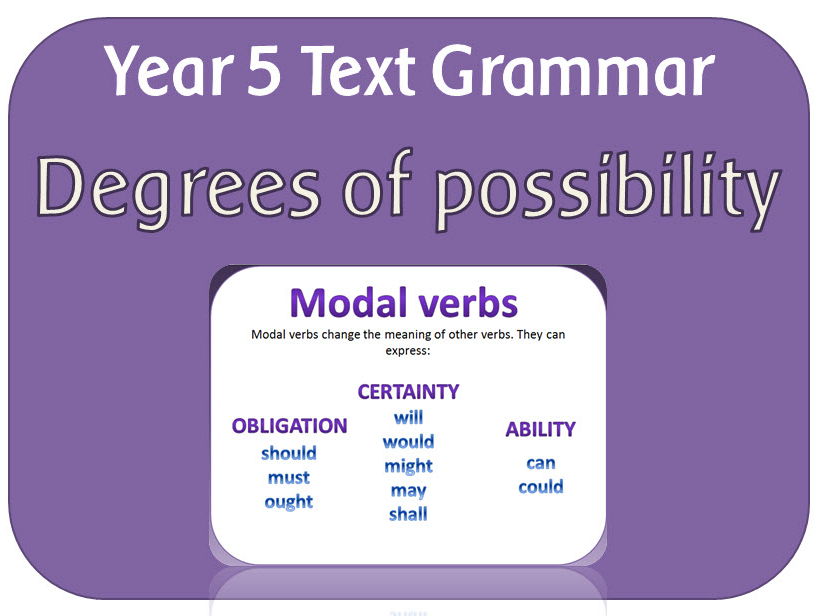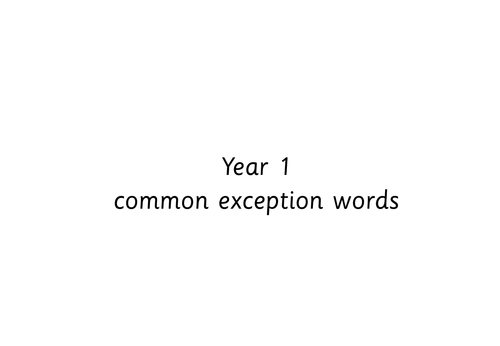
404Uploads
1036k+Views
668k+Downloads
English language arts

SPaG Year 5 Punctuation: Parenthesis (brackets, dashes, commas) and commas to clarify meaning
This pack contains 2 powerpoint lessons:
Parenthesis: How brackets, dashes or commas can be used to indicate parenthesis.
Commas: Gives examples of what can happen if commas are omitted, and how they are important to the intended meaning.

SPaG Year 6 Text Grammar: Linking ideas using cohesive devices
A powepoint and display file to help children remember a range of cohesive devices in their writing.
POWERPOINT:
Cohesive devises: Looks at and explains cohesive devices such as synonyms; pronouns; verb tenses; repetition of a phrase; adverbials and ellipses
PRINTABLE FILE (PDF):
Cohesive devices display: For reference - it contains all the terminology above.

SPaG Year 2 Spelling: Common Exception words
Spelling resources to teach the statutory requirements in Appendix 1 of the English curriculum:
COMMON EXCEPTION WORDS
POWERPOINT RESOURCES: The following PowerPoint lessons contain groups of words with similar spellings. Each grapheme-phoneme correspondence that is new to the children (depending upon phonics programme used) is introduced and explained. The children then are given opportunities to read and then write the words.
CEW 1 – door poor floor
CEW 2 – find kind mind etc
CEW 3 – most only both etc
CEW 4 – after fast last
CEW 5 – every, everybody, even
CEW 6 –great break steak
CEW 7 –move prove improve
CEW 8 – sure sugar
CEW 9 - who whole
CEW 10 - any many
CEW 11 - could would should
The following PowerPoint lessons contain individual common exception words. There are examples of different strategies the children can use for remembering how to spell the words, such as using mnemonics, saying the word as it is spelt, using the look write cover check method and highlighting the tricky part. Each strategy is demonstrated visually.
CEW Spelling strategies PEOPLE
CEW Spelling strategies BEAUTIFUL
CEW Spelling strategies AGAIN
CEW Spelling strategies BECAUSE
CEW Spelling strategies BUSY
CEW Spelling strategies CHRISTMAS
CEW Spelling strategies CLOTHES
CEW Spelling strategies EYE
CEW Spelling strategies HALF
CEW Spelling strategies HOUR
CEW Spelling strategies MR & MRS
CEW Spelling strategies PARENTS
CEW Spelling strategies PRETTY
CEW Spelling strategies WATER
WORKSHEETS:
Spelling activity sheets - A variety of pdf sheets that can be used for different spelling activities. They include:
Acrostic poems
Bubble words
Colourful words
Cut out words
Look write cover check spelling sheet
Rainbow spellings
Shape words
Silly Sentences
Spelling with both hands
Stories with spellings
Word search with spellings
Words in words
Writing a poem
Writing fun
TEACHER RESOURCES
Y2 Spelling Appendix planning - Common Exception Words: An adaptable outline plan
Word List - With relevant words

SPaG Year 1 Spelling pack: Adding er and est to adjectives
A set of resources to teach the guideline/rule in the Spelling Appendix:
if the adjective ends in two consonant letters (the same or different), the ending is simply added on.
POWERPOINTS:
Adding er and est for comparisons: Explains that er and est can be added to words for comparison and shows examples in a single word and in sentences. It ends with an activity for children to add er and est to words, then form sentences using the suffixes er and est.PDF:
PDF:
er and est sentences worksheet: A list of words to add er and est to, and space for the children to write sentences with them in.
er and est word cards: For games and activities.
WORD:
Outline adaptable plan

Introduction to reading and writing sentences Y1 Year 1
These resources introduce the concept of a sentence and show how to write a sentence.
POWERPOINTS:
Introduction to sentences: Explains what sentences and punctuation are. It reinforces the importance of capital letters, full stops, question marks or exclamation marks, and spaces in-between words.
How to compose a sentence: Introduces the concept of sentence writing, and how the children should think about and then say the sentence before they write it down, remembering to read through and check their work when finished.
“I can” sentences: simple sentences for the children to read. The vocabulary gets progressively harder, from simple CVC words to using long vowel graphemes and blends.
Jake’s Full Stop: A story demonstrating how important it is to put full stops in the right places.
Picture sentences: Find the correct sentence out of four to match the picture.
Joining sentences with ‘and’: Demonstrates how text can become more interesting when ‘and’ is used to join sentences. Ends with sentences for the children to join with the word and.
Words that fit: Find the words that can be substituted in the sentence.
Sentence building: Jumbled up words that need arranging into sentences. Suitable for a class writing activity.
WORKSHEETS (PDF) - to accompany the PowerPoints
Worksheets: 15 different worksheets to accompany the lessons, including -
A checklist when writing sentences
Finish the ‘I can’ sentences
Write the words that fit
Write sentences about a picture
Punctuation story
Match the sentences
Cut and make a sentence
The worksheets are in both colour and black and white.
Some of the PowerPoints include a linked video to watch. This is a link shared through SafeShare T.V., a program that filters adverts and unwanted commercials from the clip. You may need to check if you can access this in school.
The links were checked before uploading, but if any don’t work, feel free to contact me.

SPaG Year 2 Spelling: The /l/ or /əl/ sound spelt –le, -el, -al and -il at the end of words
Resources to teach the spelling rule: The /l/ or /əl/ sound spelt le, el, al and il at the end of words
WORDS ENDING IN LE:
POWERPOINT
Le at the end of words: A short powerpoint with 18 common words to read ending in le.
ACTIVITIES
Cards containing words ending in le - 45 word cards to play games
Wordsearch - le words
WORDS ENDING IN EL:
POWERPOINT
El at the end of words: A short powerpoint explaining that this spelling is not as common as le, but is usually found after m, n, r, v, w, and s. It displays 12 common words to read ending in el.
ACTIVITIES
Cards containing words ending in le - 27 word cards to play games
Wordsearch - el words
WORDS ENDING IN AL:
POWERPOINT
Al at the end of words: A short powerpoint explaining that not many nouns end in al, but many adjectives do. It displays 16 common words to read ending in al.
ACTIVITES
Cards containing words ending in al - 27 word cards to play games
Wordsearch - el words
WORDS ENDING IN IL:
POWERPOINT
IL at the end of words: A short powerpoint explaining that not many words end in il. It displays 9common words to read ending in il.
ACTIVITES
Cards containing words ending in al - 27 word cards to play games
Wordsearch - el words
ALL SPELLINGS OF THE /L/ SOUND
POWERPOINT
Which 'l' sound to use - shows all four spellings, with 22 words for the children to find which spelling is correct. It points out that the most common spelling is le.
ACTIVITIES
Loop cards containing pictures and all 4 spellings of the /l/ sound.
Although every effort has been made to check wordsearches for unintentional inappropriate words, it is recommended that teachers double check them before giving to children.
TEACHER RESOURCES
Word list
Planning - An adaptable outline plan of the resources included and objectives

SPaG Year 2 Text: Present and past tense and the progressive form of verbs
Four powerpoints looking at past and present verb tenses.
POWERPOINTS
Introduction to tenses: Explains what tense means, and past and present tense, giving examples including the progressive form of verbs.It ends with some examples and opportunities for children to change the tenses of sentences.
Changing present into past tense: Sentences to change
Thinking of verbs and past and present tense: Look at pictures and describe the actions in the present and the past tenses.
Irregular past tense verbs: Explanation and lists of irregular past tense verbs.

Subordination and co-ordination powerpoint, worksheets and posters: SPaG Year 2 Sentence
A PowerPoint lesson explaining what subordination and co-ordination are with accompanying worksheets and posters, designed to teach the Y2 Sentence objectives.
The set contains:
POWERPOINT:
Subordination and coordination
A 7 page PowerPoint explaining how to connect sentences and clauses using subordination (when, if, that and because) and co-ordination (using or, and or but.)
It gives examples of how to use them in sentences then gives sentence starters for the children to complete using the words above.
ACTIVITIES / WORKSHEETS:
Co-ordination writing sheets x 4: Each sheet has a different picture. The children have to write sentences using the words and, but and or.
Subordination worksheets x 4: Each sheet has a different picture. The children have to write sentences using the words when, if, that and because
DISPLAY:
Two posters explaining subordination and co-ordination with examples and a heading.

SPaG Year 2 Spelling: Adding the endings ing, ed, er, est and y to words ending in consonant / -e
Resources to teach the spelling rules for: Adding –ed, –ing, –er and –est to a root word ending in –e with a consonant before it
POWERPOINTS
Adding suffixes to words ending in e: Explains what a root word and a suffix is, and shows the addition of -ed and -ing, explaining the spelling rule. It ends with an activity to add ing or ed and er, est or y to different root words.
Quick write - Adding ed to verbs ending in e
Quick write - Adding ing to verbs ending in e
Quick write - Adding er to words ending in e
Quick write - Adding est to words ending in e
Quick write - Adding y to words ending in e
Quick write activities show firstly the the root word, then how it changes/stays the same when the suffixes are added.
ACTIVITIES
Words ending in a consonant then e matrix: to fill in
TEACHER RESOURCES
Y2 Spelling Appendix: Adding suffixes to words ending in e: An adaptable outline plan
Word List - With relevant words ending in e with a consonant before it

SPaG Year 5 & 6 Spelling: Words ending in –ant, –ance/–ancy & –ent, –ence/–ency
A pack of 4 powerpoint lessons and 10 printable activities to teach the guidelines for spelling these types of words.
ENT ENCE ENCY ENDINGS
POWERPOINTS
1 Explains that ent is used after soft c g and qu, giving examples of each of these type of words. It ends with an activity that shows a word, then it can be hidden so the children can write it, then shown so the children can check the spelling.
2 Explains how you can think of related words to gauge whether to use an e for these types of endings, for example confidential:confident. It ends with the same spelling activity. Includes words other than those preceded by soft c g or qu
PDF WORKSHEETS
Look Write Cover Check ent words (soft c g and qu): For spelling practice
Look Write Cover Check ent words: For spelling practice
Look Write Cover Check ence ency words: For spelling practice
Word search
Worksheet: Adding the endings ent ence and ency to different words then writing them in a sentence
ANT ANCE ANCY ENDINGS
POWERPOINTS
3 Explains how you can think of related words to gauge whether to use an a for these types of endings, for example consultation: consultant. It ends with a spelling activity.
4 Looks at words that need to be memorised to learn which spelling to use: Ends with a spelling activity.
PDF WORKSHEETS
Look Write Cover Check ant words (related ation words): For spelling practice
Look Write Cover Check ance and ancy endings: For spelling practice
Look Write Cover Check ant words: For spelling practice
Word search
Worksheet: Adding the endings ant ance and ancy to different words then writing them in a sentence
Plus a word list for both spellings

SPaG Year 5 & 6 Spelling: Words with the /i:/ sound spelt ei after c
A powerpoint lesson plus the following pdf files to teach the children how the i before e except after c rule applies to words where the sound spelt by ei is /i:/,plus the exceptions to the rule.
Pdf files:
Look Write Cover Check x 2: For spelling practice
ei and ie words worksheet: A passage to read and write down ei and ie words
ei words writing practice: List of ei words to identify and spell
Strategies for remembering how to spell ei words worksheet: Looks at the different spelling strategies children can use

Phase 1 Aspect 7 Oral blending and segmenting: Letters and Sounds Phonics resource pack
A set of powerpoints, games, cards and activities to develop oral blending and segmenting of sounds in words.

Letters and Sounds Phase 3 Captions and sentences
A set of all Phase 3 captions and sentences - powerpoint activities, worksheets and games.

Year 3 Vocabulary grammar and punctuation terminology posters
A set of A4 posters to print and display.
They contain all the 'terminology for pupils' identified in Appendix 2 for Year 3:
Adverb; Preposition; Conjunction; Word family; Prefix; Clause; Subordinate clause; Direct speech; Vowels; Consonants; Inverted commas/speech marks; Nouns; Present perfect; Punctuation

Year 2 Vocabulary grammar and punctuation terminology posters
A set of A4 posters to print and display.
They contain all the 'terminology for pupils' identified in Appendix 2 for Year 2:
Noun; Noun phrase; Statement; Question; Exclamation; Command; Compound word; Adjective; Verb; Suffix; Adverb; Tense; Apostrophe; Comma; Subordination; Co-ordination; Progressive; Sentence.

Year 5 Vocabulary grammar and punctuation terminology posters
They contain all the 'terminology for pupils' identified in Appendix 2 for Year 5:
Modal verb; Relative pronoun; Relative clause; Parenthesis; Cohesion; Ambiguity; Nouns; Adjectives; Verbs; Suffixes; Adverb; Adverbial.

SPaG Year 1 Spelling: Adding s and es to words (plural of nouns and third person singular of verbs)
A set of resources to teach the guideline/rule in the Spelling Appendix: If the ending sounds like /s/ or /z/, it is spelt as –s. If the ending sounds like /ɪz/ and forms an extra syllable or ‘beat’ in the word, it is spelt as –es.
4 POWERPOINTS:
Introduction to regular plural noun suffixes: Explains what singular and plural is, and when to add s or es to nouns.
Regular suffix s and es sentences: Gives the spelling rule, if the ending sounds like /s/ or /z/, it is spelt as s. If the ending sounds like /ɪz/ and forms an extra syllable or ‘beat’ in the word, it is spelt as es. It gives examples of different types of words with these endings and ends with sentences for children to think of the missing plural word.
s or es quiz: Interactive quiz where the children have to choose between adding s or es.
ACTIVITIES:
Adding s or es worksheet: A list of words to make plural.
Show me cards - s or es
WORD:
Outline adaptable plan
List of words with plurals and verbs ending -es

SPaG Year 5 Sentence Grammar: Degrees of possibility using adverbs or modal verbs
A powerpoint teaching about how to indicate degrees of possibility using adverbs or modal verbs might, should, will, must.

SPaG Year 2 Spelling: A recap of the rules for adding suffixes
A powerpoint looking at the rules learnt so far for adding suffixes beginning with vowel letters.

